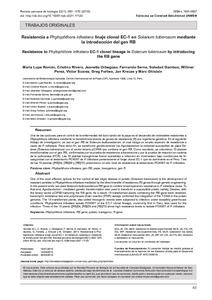Pigeonpea is a protein-rich legume which is consumed worldwide in a variety of forms (whole seed, dhal, and as a green vegetable). In India, pigeonpea is milled to yield dhal (cotyledon) and this process generates 25–35% waste byproducts. The hull (seed coat) which accounts for 10% of the byproduct is disposed of either as waste or low-cost cattle feed. To recycle the waste byproducts into the food value chain, this study was conducted with the objectives: (i) to estimate nutrient accumulation in the major seed fractions (cotyledon and seed coat), (ii) to estimate the percentage of nutrient contribution by major seed fractions, (iii) to assess the percentage of nutrient loss due to dehulling, and (iv) to determine the scope of seed coat in nutritional value addition. For this, a subset of 60 diverse pigeonpea accessions selected from 600 pigeonpea accessions raised during the 2019 and 2020 rainy seasons at ICRISAT, Patancheru, India, was subjected to a cotyledon and seed coat nutrient analysis. The three-way analysis of variance revealed the significant influence of cropping years, seed fractions, genotypes, and their interactions on nutrient accumulation. The nutrients, namely protein (32.28 ± 2.29%), P (476.51 ± 39.05 mg/100 g), K (1557.73 ± 66.82 mg/100 g), Fe (4.42 ± 0.41 mg/100 g), Zn (2.25 ± 0.21 mg/100 g), and Cu (0.95 ± 0.07 mg/100 g) were enriched in cotyledon. Mn was equally enriched in both the cotyledon and seed coat (1.02 ± 0.12 mg/100 g and 0.97 ± 0.34 mg/100 g, respectively). The seed coat had a high concentration of Ca (652.02 ± 114.82 mg/100 g), and Mg (249.19 ± 34.12 mg/100 g) with wide variability for Fe (2.74–5.61 mg/100 g), Zn (0.88–3.95 mg/100 g), Cu (0.38–1.44 mg/100 g), and Mn (0.58–2.18 mg/100 g). It is noteworthy that the protein and P contents in the cotyledon were 7 and 18 times higher than that in the seed coat, respectively, and the Ca content in the seed coat was 12 times higher than that in the cotyledon. A correlation study revealed that for overall nutrient improvement in dhal, selection for a small seed size was desirable. On an average, the percentage of nutrient contribution by major seed fractions revealed that the cotyledon portion contributed around 95% protein and P; 90% K and Zn; 85% Fe, Cu, and Mn; and 75% Mg, while the seed coat portion contributed nearly 65% Ca to the whole grain. The findings of high Fe and protein concentrations in the cotyledon and high Ca accumulation in the seed coat can serve as a new guide for improved technological fractionation of these components to serve as a novel functional food ingredient and as a dietary supplement that can address malnutrition.
Calcium-Rich Pigeonpea Seed Coat: A Potential Byproduct for Food and Pharmaceutical Industries
Citation: Susmitha, D.; Kalaimagal, T.; Senthil, R.; Vetriventhan, M.; Anitha, S.; Manonmani, S.; Jeyakumar, P.; Reddymalla, S.; Peerzada, O.; Arveti, V. N.; Azevedo, V. C.; Singh, K. 2022. Calcium-rich pigeonpea seed coat: A potential byproduct for food and Pharmaceutical Industries. Sustainability. ISSN 2071-1050. 14(9), 4918.
2022-05-31
FOOD SECURITY, FOOD SYSTEMS, GENEBANK, GENETIC RESOURCES, GENETICS, GENOMICS AND CROP IMPROVEMENT SCIENCES GGCI, NUTRITION, SEED SYSTEMS
journal_article



